Cryptocurrency Information
Poloniex Crypto Exchange: Bitcoin Margin Trading, Lending & Fees
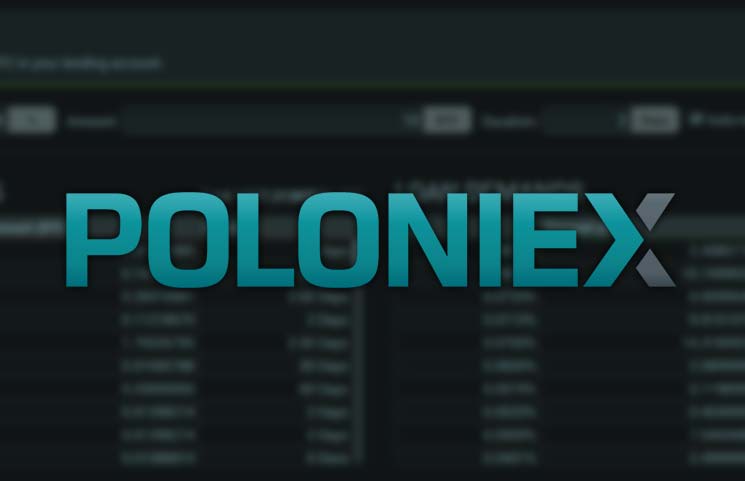
Poloniex Exchange Review
Poloniex is one of biggest cryptocurrency marketplaces in the world, and frequently the largest bitcoin trader. Founded in 2014 by Tristan D’Agosta, the US-focused exchange opened in San Francisco.
There is some controversy in the legend of Poloniex, as many authors list it as operating out of Wilmington, Delaware. This appears to be an agent or registering party’s address, although online masking services make it difficult to conclude with certainty. While initially anticipating servicing the American market, overseas interest prompted the exchange to begin thinking globally.
Having begun attracting traders from abroad, the company shifted their focus to ensure that all traders are welcomed onsite, and not just US citizens. Daily trading on the exchange now stands at an average of just under $1 billion, and the data monitor CoinMarketCap ranked Poloniex as the 25th biggest digital exchange in May 2018, citing a daily trading figure of just $70 million. A glance at the day’s trading on Poloniex would seem to indicate that either figure could be right, but the more accurate daily average seems to rest with CoinMarketCap.
After an extensive redesign circa 2015, the development team introduced additional new features, such as enhanced technical analysis charts and improved UX that includes live chat. With a damaging history of incredibly tardy support responses, the exchange’s addition of “live chat” may be of negligible value.
Unlike other similar exchanges, Poloniex has always presented grandly and been well patronized, yet has dragged this glaring issue along with it through the years. Less a Poloniex problem than a persistent problem facing crypto trading outfits the world over, support in the cryptosphere has been a lagging and potentially preventative issue since blockchain began.
That said, the site is well-designed and polished, and a truly immersive crypto trading experience is made real through this exchange. Users are loyal and growing, and the UI is not only logical and easy to use, it’s also smart, with a sophisticated feel in the presentation.
Poloniex [poloniex.com] has evolved in a very short space of time into a user-defined, elegant altcoin exchange, offering a very secure trading environment, data analysis and advanced charts. The overall security, depth and volume of daily trading make Poloniex the benchmark for many of its users.
How Does Poloniex Work?
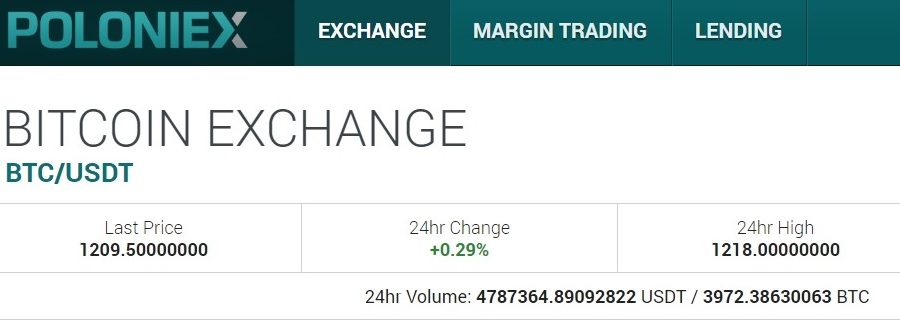
The Poloniex model is similar to competing digital exchanges that deny fiat currency and act as pure cryptocurrency trading venues. A “pure” crypto to crypto platform, fiat currencies cannot be employed to transact on the site, not even to purchase initial holdings users need to have digital coins in a wallet in order to be able to trade on the platform. Around 100 coins are on offer and trading fees range between 0.08 and 0.25 percent.
New users will load their exchange account from a wallet facility. It might seem obvious, but in order to trade, users are advised that they need to be in possession of a cryptocurrency supported by the platform already.
Clicking Balances > Deposits & Withdrawals onsite, users can select the wallet they wish to deposit to and fund their account. Once set up, users can trade a variety of altcoins for Ether, bitcoin, USDT or Monero.
Pairs to trade are figured from the RHS of the Exchange page. A user seeking an altcoin sets a buy price and the total of the digital currency desired when placing an order. The exchange charges no deposit fees, although blockchain network fees are applicable and vary from one project to the next.
Poloniex makes it easy to pop in and out of the exchange to trade once established. With a simple, logical layout, new users can familiarize themselves with the site in a day, and this ease of use goes some way towards explaining the exchange’s popularity.
The standard two-step authentication protocols are at play on Poloniex, and in keeping with the current practices of cybersecurity, everything is under 24/7 monitoring, while cold-vaulting reserves is also practiced. The exchange keeps the majority of deposits in air-gapped cold storage. This way, the exchange maintains online only what’s needed for daily trading, storing the bulk of holdings out of the reach of attack.
Another component of the exchange’s success is its dynamic inclusion of valuable tokens as they arise. Following strict criteria in evaluating coins, the exchange’s users claim a confidence in using the platform as it is current and connected to news in the cryptosphere.
Poloniex UX
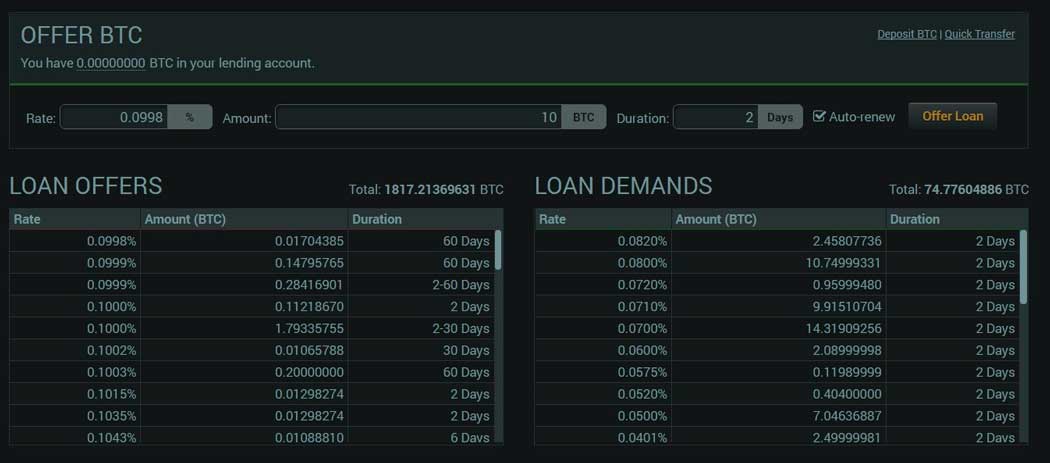
The exchange is emblematic of a modern digital trading platform, having gotten most aspects right in the initial build. Starting from a good base, it is hoped that Poloniex might emerge as the exchange that sets new service levels addressing UX.
Unfortunately, while not endemic to Poloniex, the perpetual complaints on serious user issues remain. On the plus side, it appears that support issues predominate user comms, as opposed to more serious concerns. That said, when support failures result in unpaid or terminally stagnant or evasive funds, it is hoped the exchange will emerge at the forefront of professionalizing the arena on this issue.
Other exchanges have had far worse press for their intransigence and even demonstrably absent customer support, but Poloniex has made a meal out of poor resolution. An overview of traders’ complaints reveals dire unresolved issues that are unacceptable in any trading arena, where time is of the essence.
Poloniex traders have waited weeks and even months for their issues to be addressed, while some continue to wait. As a phenomenon, it is unfortunate that the single aspect of poor support contributes still to the scam perceptions of millions of people all over the globe. Especially in the asset management arena, tales of indifference or sneakily-built, hands-off client support are a deadweight, holding back the potential adoption of digital assets by immeasurable numbers of the world’s citizens.
Withdrawal Issues – the worst kind – constitute the majority of serious complaints. While cryptocurrency networks are still sometimes unstable and the entire industry itself still such a brand new thing, one would nonetheless expect a big hitter like Poloniex to be targeting resolution on this front.
It flies in the face of such a polished and professional site that the focus remains on company benefits, not user experience. Even in cases where a new account holder can withdraw funds, it is often difficult to up the maximum daily withdrawal of $2,000 per day. Any fintech platform is only as good as its display of how seamlessly it returns users’ funds, and here Poloniex unfortunately does no better than any other, and frequently does worse.
Poloniex Exchange Attacks
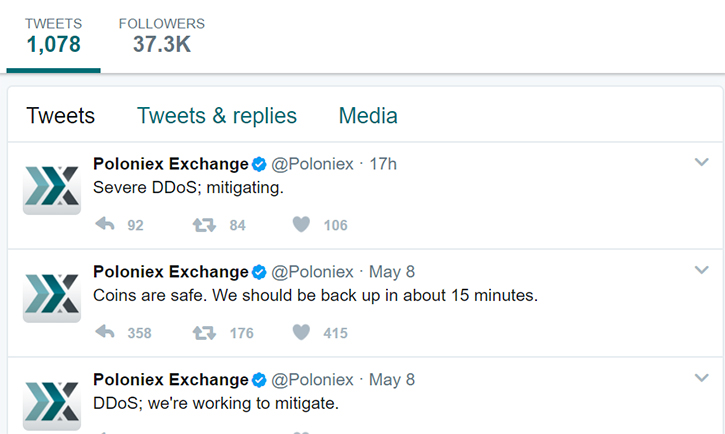
In February 2018, Circle Internet Financial Ltd., the Goldman Sachs-backed mobile payments company, acquired the exchange after brief negotiations. Prior to this, in March 2014, Poloniex succumbed to a hack costing around 12.5 percent of held bitcoin. As testament to the security protocols at play on the exchange, Poloniex stopped the attack and temporarily closed the trading floor.
A further feather in Poloniex’s cap is the fact that, after trading resumed and losses were tallied, company CEO D’Agosta took the decision to refund users. Not all good news, as the refunds were partially financed by increasing fees, the exchange nonetheless made a grand statement about its credibility and overall trustworthiness.
As much-vaunted legislation comes home to roost in many countries around the world, Poloniex is also required to remain current on regulation in all of the jurisdictions in which it operates – basically the world. Due to local laws, some American states have been denied service. For example, July 2017 saw Poloniex exit from Washington State. This followed the enactment of the Uniform Money Services Act, Senate Bill 5031.
Although it sounds dire, law firms announced in 2017 that they were investigating claims of users who had suffered losses due to DDoS attacks. More an inevitable component of online life, Poloniex was nonetheless targeted by some traders pursuing these losses.
While an outside observer with scant knowledge might deem a DDoS attack and subsequent losses as negligible, the reality is different. In a DDoS attack, it frequently happens that leveraged positions are liquidated. In other words, traders having taken a prospecting position see their strategy corrupted and rendered void in the disruptive attack. Typically, the attack will wobble prices if sustained or big enough, and traders betting that ETH will, for example, raise in value over the next period of time will see price fluctuations destroying their planned, technical analysis. Positions fail and losses are incurred.
With the backing of Goldman Sachs, it is hoped that security will be prioritized and more traditional and tight protocols will be brought into play on the exchange. After initially denying any conversation, neither company would disclose the price paid for Poloniex after the deal was struck. Circle estimated daily volumes at up to $2 billion at the time, and Fortune Magazine reported that the deal cost $400 million.
Poloniex Conclusion

A sleek and popular site, Poloniex remains a top-end port of call for those active with cryptocurrency. Easy enough for new users to acquaint themselves with, the site has also been able to satisfy exacting, dedicated traders.
On the whole, while delayed or terminally absent payments cannot be denied as serious concerns, the exchange is a well-managed construct with a deservedly loyal following. In the novelty of the advent of blockchain technology and accompanying digital assets, much has been written off to teething problems. In 2018, however, Poloniex now has the opportunity to outperform on issues of support, and rise to the top of the upper ranks.
Assuming the company can sidestep waiting periods of 90 days and longer for support to address serious user concerns, Poloniex has every potential to remain one of the world’s largest bitcoin exchanges. New users are advised to read through chat rooms on relevant forums to satisfy themselves that the reported-on services will meet their cryptotrading needs.
Cryptocurrency Information
Bitcoin Volumes Finally Grow Again and Bitfinex/Tether Issues Spark Systemic Risks, New Diar Report Affirms
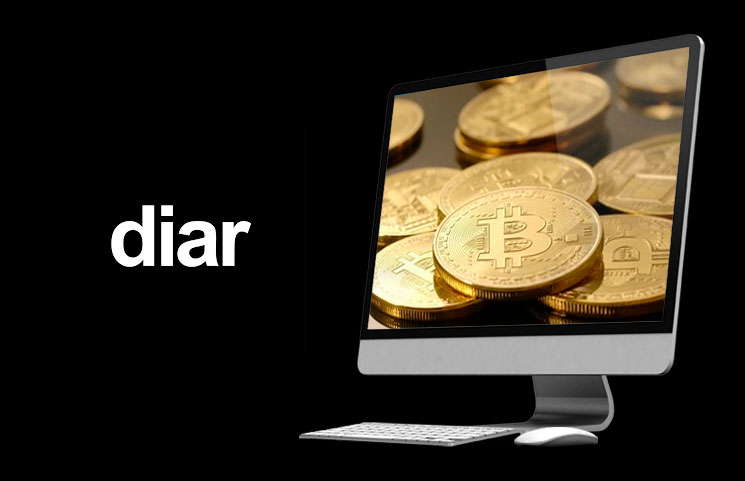
Diar has recently published its report of the crypto market for April. According to the company, Bitcoin volumes are finally growing again and the whole situation with Tether and Bitfinex showed the industry some of its systemic risks. DAI fee hikes and stablecoin projects were also highlighted in the report.
Bitcoin Goes Back To Growing Again
The main highlight of the month is, obviously, that Bitcoin is back on the action. After facing lows which started in 2018, the token has finally been able to effectively reverse the trends and have an actual price surge this month, going from less than $4,200 USD to over $5,200 USD during this short timeframe.
With this, the number of on-chain transactions has spiked for three months in a row, since prices started to get some of their value back in March and April. Now, transaction volumes are around their levels in June 2018 when the price of the asset was around $7,000 USD.
However, charts indicate that Bitcoin is yet to find more footing outside of speculative trading, so the bull market may not be as near as some think.
When looking at the volume of the whole quarters, Q1 2019 had lower volumes than Q4 2018, but Q2 2019 started considerably well.
Bitfinex and Tether Start Concerns of Systemic Risks
As you may have heard, Bitfinex was accused of using Tether funds to cover up its losses. According to Diar, there is a 26% shortfall of in-cash reserves to back Tether tokens (USDT). Tether loaned $850 million USD to Bitfinex to cover up losses and its general counsel Stuart Hoegner has affirmed that the company is operating with fewer reserves than the total market cap of the token.
This happened because Bitfinex had the $850 million USD “seized” by Crypto Capital, one of its payment processors. Unless Hoegner is lying, though, the company had the assets to back the stablecoin until recently.
While it is clear now that Tether simply does not have the money to back the funds, people simply keep buying the tokens. Now, instead of all cash, some shares of Bitfinex are being used to represent the rest of the value, which makes the stablecoin enter securities territory for the first time.
Curiously, the markets are all very tolerant now since the prices are still stable but the systemic risks are clear, especially if other companies are to follow Tether’s path.
DAI Hikes Fees Once More
Another situation highlighted by the reports is that DAI has decided to upgrade its stability fees once again as the community is desperately trying to make the prices of the so-called stablecoin go up again. DAI tokens are being sold for less than $1 USD, their official price, on secondary markets.
At the moment, the fees are 16.5%, after increasing three times in only one month. Before April, the fees were only 7.5%. This has resulted in a decrease of 4.9% in the circulation of DAI tokens.
Stablecoins Eye Wider Use Cases
Gemini and Harbor, a A16Z tokenized securities platform, have started a partnership in order to get more clients for the Harbor stablecoin. However, this was deemed “too soon” by Diar, as Harbor does not have any known token right now. The only one the company had was canceled.
TrustToken is also trying to get more stablecoins on its list, especially the ones that are not focused on USD, but on several other fiat currencies like HKD, CAD or GBP instead.
Cryptocurrency Information
#DropGold Campaign to Hit Your TV, Here’s A Breakdown of the Underlying Bitcoin Message(s)

Grayscale, a leader in digital currency investing, launched an ad on Wednesday, May 1, telling investors that money should be contributed to Bitcoin holdings as opposed to gold. In a number of interviews, CEO of Grayscale’s parent company (Digital Currency Group), Barry Silbert and Managing Director of Grayscale, Michael Sonnenshein, have since expressed the underlying message of the ad.
The #DropGold Ad
According to news outlet, U Today, the ad starts off with a man holding gold bars in his arm, which he decides to drop. While doing so, a woman also does the same. Throughout the ad, people supposedly have their gold bars stacked in shopping carts, while “losing their gold coins.” Watching what’s about to unfold, the two individuals try to find their way out.
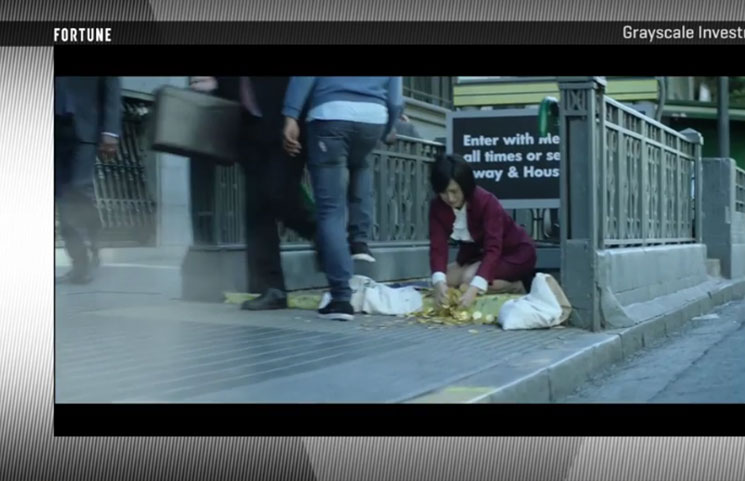
Advertising Bitcoin or Grayscale’s Services?
Despite being the one to have introduced this campaign, Silbert argues that it isn’t entirely about Grayscale services, but rather said services being a result of consumers’ decision. Yahoo Finance has since quoted the following comment made by Silbert himself:
“We do not see this as a Grayscale commercial. For us #DropGold is our ‘Got Milk’. This campaign is first and foremost focused on starting a conversation about bitcoin vs gold. If the ad makes people want to get into Bitcoin, we’re completely indifferent about how they go about doing it.”
Having said this, the commercial is evidently portraying Grayscale as an option, as towards the end, one is told, “Go Digital. Go Grayscale.”
Silbert’s and Sonnenshein’s Arguments Regarding Gold’s Limitations
Silbert believes that this campaign works towards addressing the fact that Bitcoin can serve as an equal asset class as gold, if not better. In particular, he was quoted saying, “But now you have Bitcoin, which, in our opinion, provides all the same attributes as gold – it’s fungible and scarce and you can’t counterfeit it – but the big difference is that Bitcoin has utility. Gold doesn’t have much utility beyond jewelry.”
He further argued that the goal here isn’t to replace fiat currency for shopping purposes, but rather to show the world that Bitcoin does a better job at doing gold’s job and this will be evident in the long run. Although he has acknowledged Bitcoin’s volatility as being concerning, he is hopeful that it will one day serve as both an ideal utility token and store of value.
As for Sonnenshein’s viewpoint, he sees this ad as revealing the “absurdity” associated with gold. More specifically, he said:
“We’re going after a narrative around gold being where investors should go when markets turn south or as a hedge against inflation […] we’re highlighting the absurdity of gold.”
As per The Block Crypto, Grayscale also tries to convince investors that the return earned from redistributing 5% of gold to Bitcoin will be greater than 5% yearly.
What are your overall thoughts on this ad? Did it leave you asking yourself, “Why did you invest in gold? Are you living in the past?” Share your thoughts below!
Cryptocurrency Information
Huobi Pro Bitcoin Exchange: Cryptocurrency Asset Trading Platform?

Huobi Pro Cryptocurrency Exchange
Founded in 2013, Huobi Pro allows for a myriad digital currencies to be exchanged, at a 0.2 percent trading commission. Loyal users point to the low fees and stellar service that make the exchange stand out above others.
Although pitched at dedicated cryptocurrency enthusiasts since the site doesn’t accept fiat currencies many who enter the realm on the back of fiat end up at Huobi Pro, largely due to its diverse offering and favorable fee structure.
Huobi Pro in A Nutshell

A victim of China’s clampdown on digital currencies, the company might be registered in the Seychelles, but was originally founded in Beijing. As testament to the broad appeal of the platform, after the Chinese regime effectively banned all things crypto at the beginning of 2018, trading volumes have only grown.
While at first very much a Chinese company looking at the home market, Huobi Pro has been forced to find a wider marketplace on the international scene. Indeed, even prior to the official cessation of altcoins and their trading, the company heard the rumblings in 2017 and took its cryptocurrency interests abroad.
Huobi now provides exchange services to users in over 130 countries. Company offices are located in the USA, Korea, Japan, Singapore and Hong Kong. Although the Huobi Group also owns and manages the Huobi Autonomous Digital Asset Exchange (HADAX), Huobi Pro is more of a pure “login and trade” exchange.
Users can employ network tokens to cast votes on adding new altcoins on HADAX. On the Huobi Pro exchange, a simplified offer encompassing all of the mainstream altcoins greets visitors. Some more popular coins offered are Bitcoin (BTC), Bitcoin Cash (BCH), Ethereum (ETH), Litecoin (LTC), NEM (XEM), NEO (NEO), Qtum (QTUM) and Ripple (XRP).
That said, when one actually tallies the number of altcoins available for exchange, it becomes apparent why loyal followers value the site. A marriage of both simple ease of use and diversity in trading, the platform is largely welcomed by newcomers and experienced enthusiasts alike. In the current melee of regulation being contemplated, implemented and tweaked all the while, some users may be precluded from trading on the exchange based on their country of residence.
Huobi Pro accepts the funding of accounts only in digital currencies, and accepts deposits in any of its listed altcoins. Unlike other exchanges that have opted for a midway between crypto and fiat, Huobi Pro traders deal strictly in digital coins at every point of a transaction. Funds need to be withdrawn to a wallet, and fiat users looking to buy in will have to establish a wallet first in order to fund their Huobi Pro trading account.
Traders pay a maker or taker fee of just 0.02 percent using the exchange. There are more detailed offers, worth looking at for daily traders with volume.
Huobi Pro Membership Levels

VIP users get preferential platform trading fees if they buy the privilege with Huobi tokens. The Huobi Token (HT) was never an ICO token, but rather a system token that users only obtain by buying “Point Cards” on the Huobi Pro platform. Point Card is essentially a pre-paid Huobi card that keeps users liquid on service fees. One HT = 1 USD, therefore one “point” = 1 USD. The more points purchased, the more free points are added, although savings on 1000 points, for example, means only 10 HT for free.
Huobi Global minted a fixed total of 500 million tokens, with 300 million employed to facilitate the in-house VIP structure. A mark of the business group behind the platform is seen in their practice of buying back-sold tokens from the open market each quarter. Not only that, but those funds go towards the Huobi Investor Protection Fund (HIPF).
This is a planned fund that will compensate investors who suffer platform disruption and subsequent losses. It’s a tool that minimizes risk, smooths out the market overall and also goes towards protecting investor interests. This transparent and pleasing aspect of the platform is one reason traders have confidence in the exchange, and its popularity is rising worldwide.
By way of example, in order to glean a VIP status, a trader will pay 120 HT a month for First Level membership. This enables a 20 percent discount on trading fees. Running through toward the top end, a pricier option of 6,000 HT a month secures a 50 percent discount on fees. Overall, a diligent trader can optimize the system and come out with a substantial discount on the already low 0.02 percent base offer.
The company charges no fees to deposit funds, but there are withdrawal fees. Although there are reviews online listing withdrawal fees, it appears that, especially within the membership structure, users are advised to ascertain exact fees when establishing their account. Likewise, transfer limits need to established upfront to avoid disappointment later. There exist order size limits on the platform too, again becoming more malleable as one moves up the ranks of the VIPs.
Security And UX On Huobi Pro

All of the standard protocols including two-step Google Authenticator verification are at play on the platform. Unlike many other exchanges that offer a simple crypto-exclusive platform, Huobi Pro will need your personal details in the form of a passport copy and chat room comments are not devoid of complaints, although almost all of them take issue with the structure of the platform and its potential pitfalls. There are few allegations of lost funds or other negligence on behalf of the company. On the whole, Huobi Pro seems to be rubbing off its decidedly corporate ethos onto the exchange – good news for traders overall.
Another serious boon for the cryptosphere as a whole is that over 98 percent of holdings are stored in an offline cold wallet or vault. Imbued with a strict customer service ethic, the platform probably sports the best customer service to date for crypto exchanges. Available 24/7 365, there is a live chat option onsite.
The platform intel is sufficient although newbies might have to scratch to paint a clear picture of how exactly everything works. The FAQs are thoughtful and, again, testament to a polished offering. Huobi used to be one of the biggest Chinese crypto exchanges, based in Beijing. Started by entrepreneur Leon Li in 2013, since the move there has been mutual appreciation of its value. Worldwide users have taken to the exchange, as it too realized that it had global appeal.
Huobi Pro Conclusion

Huobi claims to have exceeded BTC 500,000 in daily trading approaching 2014. Although only in its fifth year, that’s a long time in cryptocurrency. Although frequently accused of embellishing trading volumes, these allegations have never been proven. In comparison to other digital exchanges that have suffered persistent user complaints and even been shut down due to criminal activity, Huobi Pro shines.
As an offering, it has low fees, great diversity and an unbeatable crypto-energy. No trader on the platform feels like they’re missing out on something else somewhere else, by most accounts. Possibly due to their prior involvement in the fintech world, the platform got it right first time around and user numbers prove it. The company Huobi also owns another trading platform, BitYes, more focused on USD/BTC and USD/LTC pairs trading. Great customer service and minimal technical glitches have made it appear positively top-tier, again in comparison to less polished outfits.
With a detailed offering, great client liaison – very unusual for most digital exchanges so far – and no legitimate proof of anything even vaguely dark hanging about them, the Huobi Pro project is recommended. Users are advised to always ascertain costs prior to trading – not hard with the customer support in this case – and sample a platform with small trades before trading greater amounts. To learn more, you can head to their official website: huobi.pro










